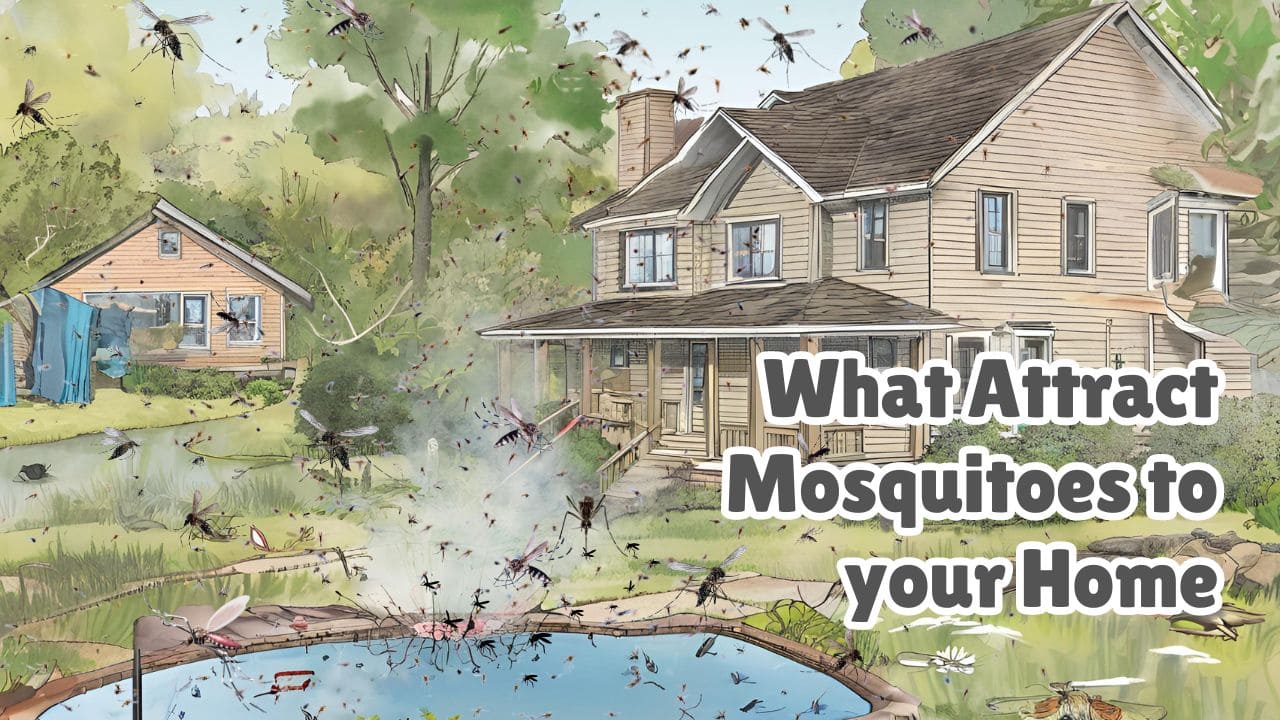Table of Contents
What are the things that attract mosquitoes to your home
Knowing beforehand what attracts mosquitoes to your home will help you in taking necessary steps for reducing their interference and population long before they become a huge problem.
1. Carbon dioxide, body heat, sweat and body odor
Mosquitoes primarily targets and locate their hosts by sensing carbon dioxide that humans and animals exhale. They are attracted to body heat, body odor and other chemical compounds like lactic acid and ammonia, released through sweat by animals and human beings. The mosquitoes can find the trail from more than 50 meters away.
In warm summer evenings, when body heat is higher than usual and and increased perspiration, causes humans and animals to easily attract mosquitoes.
2. Dark colored clothing
Mosquitoes use color contrast to identify potential hosts and dark colors like navy, maroon, black become prime targets as they are easier to spot by mosquitoes. And, on hot summer days, dark colored clothing absorbs more heat. This makes the individual wearing dark colored clothes to become an epicentre of heat and hence becomes more appealing to mosquitoes.
Body fitting clothes will make you perspire more and will absorb most of the sweat, thus preventing self drying of sweat. On the other hand, loose fitted, light colored breathable fabrics will help you in keeping your body heat as well as the visual contrast to levels that are not that appealing to mosquitoes.
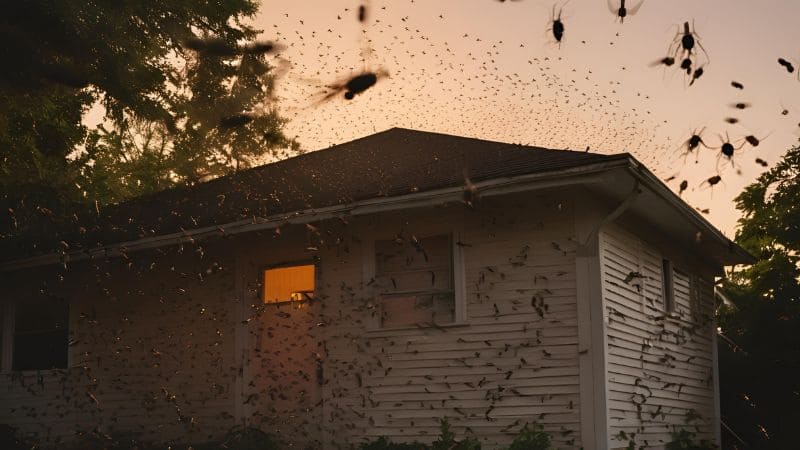
Image Credit: MosquiTalk.com
3. Standing water
Any signs of standing water, even a small cup of water can become a mini mosquito breeding site. Around your home you may see number of things that may accumulate water after rain. Or you might see some water sources that can become mosquito breeding sites like birdbaths, gutters, garden ponds, etc. Any such breeding site can create a large population of mosquitoes within a short time.
You should check your yard for any water build up or accumulation after rain. This can be any place like broken toys, uncovered containers, gathers on car covers, etc.
1. Ponds, fountains and water features: Ponds, fountains and any kind of water features in your garden are the biggest threat as they provide the perfect conditions for mosquito breeding.
To keep mosquitoes away from laying eggs in your ponds and water features, you should use mosquito dunks which will kill any mosquito larvae present there. Add mosquito fish or goldfish in your pond to reduce mosquito population at the larval stage.
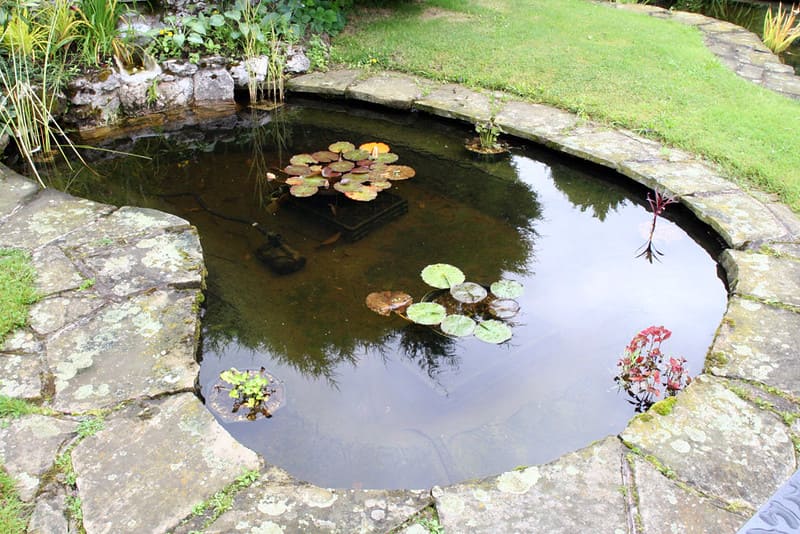
Image Credit: Flickr by Crinklecrankle.com | Content License
2. Pet water bowls: Mosquitoes can lay eggs in any source of standing water, and if pet water bowls are left with water than they will eventually become a mosquito breeding site, no doubt in that. Even empty waterbowls can collect rain water and if left unattended for along time will attract mosquitoes to lay eggs.
Try to bring them inside or keep it tuned upside down to avoid any water collection. Empty, clean and wash them frequently or on a daily basis.
3. Watering cans and rain water barrels: Watering cans, rain water barrels, or any other such objects that may collect water and left standing for a longer period of time, will become mosquito breeding site. Such water contained objects should be emptied and removed from open spaces where they can easily collect rain water.
These uncovered water containers do not provide just standing source of water but also acts as a perfect hiding spot with dark, moist environment, where the eggs will hatch quickly and mosquitoes can grow at a faster speed due to favorable environmental conditions.
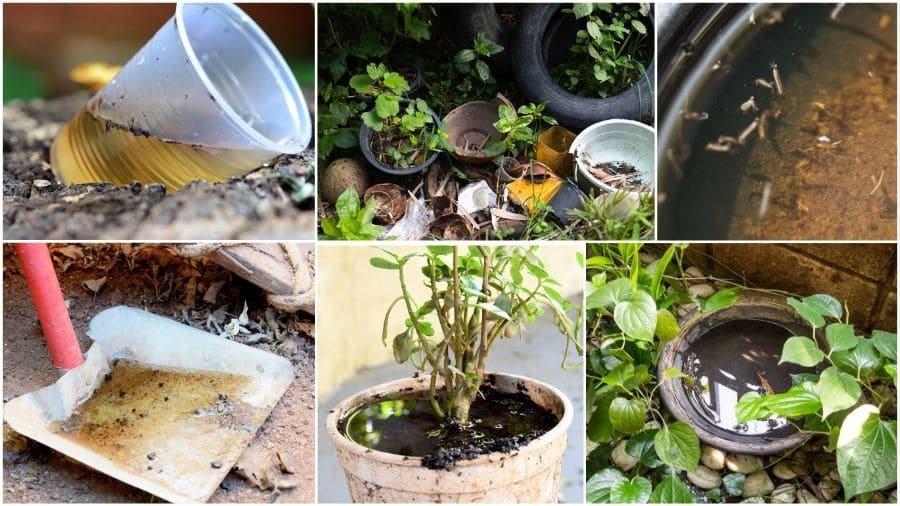
Image Credit: Canva Pro | Content License
4. Neglected bird baths: The shallow, undisturbed standing water in any neglected unmaintained bird bath will attract mosquitoes. Here too, if not cleaned and maintained regularly, the bird baths will provide favorable conditions for mosquitoes and accelerate their growth process.
If possible place a small aerator or aquarium pump that will create continuous movement in water and will keep mosquitoes away.
5. Old tires and tire swings: Old discarded tires in your backyard, lawn, playground, or outside garage can easily collect and hold rain water in their inner rims. These trapped waters are not easily evaporated and remain there for a long time, which becomes a breeding site or haven for mosquitoes, there itself the mosquitoes can lay 1000’s of eggs.
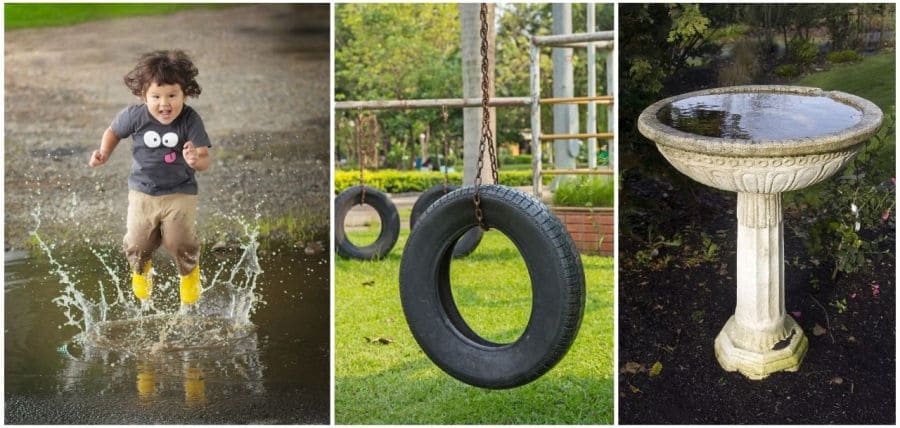
Image Credit: Canva Pro | Content License
6. Saucers of plant pots, water plants, flower vases: Drained water from the plant pots to the tray or saucer below it, becomes haven for mosquitoes. Any excess watering of plants will form a pool of water in the pot surface, which will attract mosquitoes.
Similarly, standing waters in water plants and flower vases inside your home can also invite mosquitoes for laying eggs. To keep mosquitoes away from these water sources, you can add mosquito bits or granules, or even small pieces of mosquito dunks.
7. Garbage bins and trash cans: Moisture inside the trash cans and garbage bins which is mainly from wet waste and decaying food items can attract mosquitoes. Even the smallest amount of free flowing liquid at the bottom of the can or bin will be enough for mosquitoes to lay eggs.
To avoid mosquitoes from laying eggs keep the trash cans tightly packed with lids and clean it frequently. Use bin liners and avoid food waste sitting in the bin for longer.
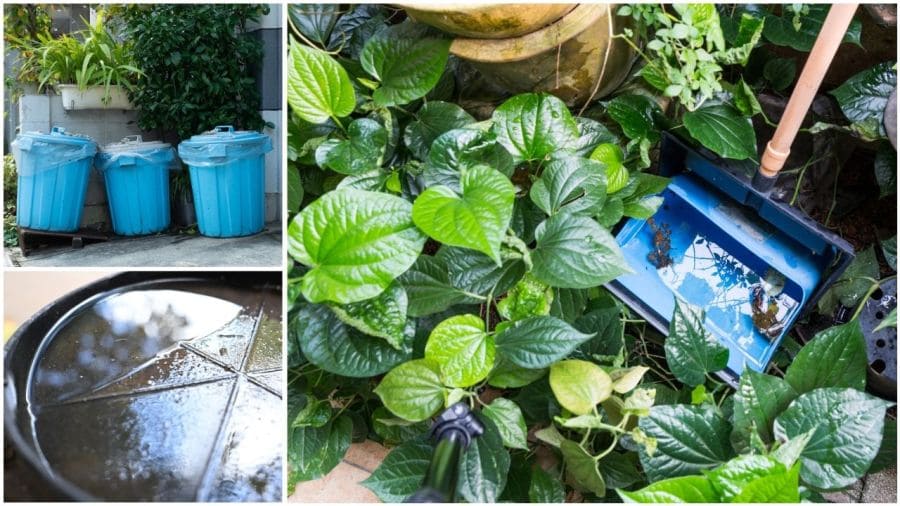
Image Credit: Canva Pro | Content License
8. Kiddie Pools: These are air filled large balloon like structures, that are appropriately shaped to use it like water pools. Mostly used by kids for play ground activities specially in summers. When the water is not completely emptied after use, and the small shallow water left inside will attract mosquitoes.
After use, it should be emptied, folded and stored away to prevent mosquito breeding. If you cant empty or want to use it for next day, than you can cover it with a pool cover.
4. Moist and humid environment
The mosquitoes need favorable conditions to lay eggs and for that they are always in search of standing water bodies. Even after finding and laying eggs, they need to find hiding spots which provides sufficient moisture, cool and humid climate and prevents direct sunlight.
The mosquitoes are active in night and remain hidden during the day. This is because they are very weak and dehydrates quickly under hot sun during day time, which may also lead to their death. Therefore they avoid daylight by hiding in cool, moist and humid spots, around your home and garden.
1. Puddles and marsh lands: These are formed after heavy rains or also can be due to poor drainage systems. The moist and humid conditions from these marshlands along with still water invite mosquitoes to lay eggs.
Optimize your landscape with better drainage systems and avoid water pooling. Fill low lying areas to avoid accumulation of water and keep it dry.
2. Clogged drainage and jammed gutters: Many a times your drainage system and gutters get jammed due to solid waste like plastic and single use disposable items, broken crockery, debris or leaves. After heavy rains, the unexpected flow of water along with huge solid waste choke up the gutters and restricts the flow of water. This causes dirty drain water to accumulate around the gutters.
The debris and decaying waste attracts many insects and pests, along with mosquitoes. Within a short span of time mosquito will lay eggs and will get hatch soon.
Better to install drainage guards and screeners to remove the debris before itself, otherwise going directly to the main gutter lines causing chokeup. Regularly clean and check gutters and drainage systems for any faults and waste accumulation.
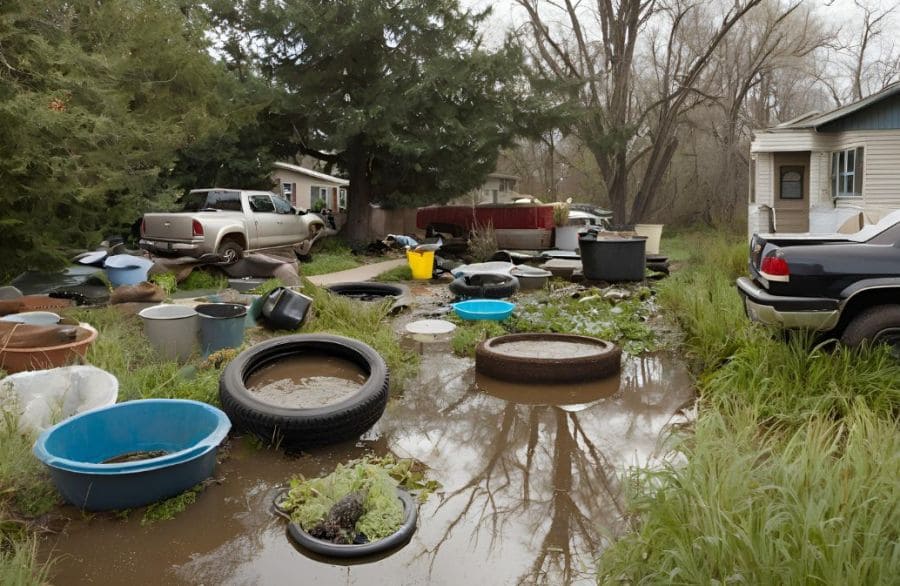
Image Credit: AI Imagined with Canva Pro
3. Dirty toilets: Mosquitoes are highly attracted to unhygienic environments like toilets, gutters, etc. Standing waters or water pooling in rarely used toilets like one in guest rooms or garages can become haven for mosquitoes. Such places can also become hiding spots as they provide moist, cool, dark and humid conditions during the day.
4. Leaking water pipes and faucets, clogged basins and water sinks: Leaking water faucets and pipelines can all lead to water accumulation and become breeding spots for mosquitoes. Mosquitoes are attracted to moist environments and therefore leakages can become an issue.
5. Water pooling in bathroom floors: Improper sloping in bathroom floors may prevent water to drain completely. Or else any leaking pipeline and dripping faucets can cause water pooling at the corners of bathroom. Since, some of the bathrooms like the one in guest room or in a garage, is not used frequently used and so these water pooling can become a hotspot for mosquito breeding.
Proper plumbing and maintenance of pipelines and leakages will help in preventing mosquito breeding in toilets and bathrooms.
6. Wet laundary: The wet hanging laundary outside specially overnight may attract mosquitoes as they are attracted to the moisture in the clothes. Avoid drying clothes in evening, prefer morning time when clothes can easily dry till noon.
7. Water accumulation in shades, blinds, car covers, tarpaulins, etc.: The overlapping layers, gathers of a tarpaulin or car cover when incorrectly used, or improperly stored in open outside, will collect water and become a prime breeding site for mosquitoes.
The water trapped in between the layers, gathers or crevices may be left unattended for many days which will easily allow breeding of mosquitoes.
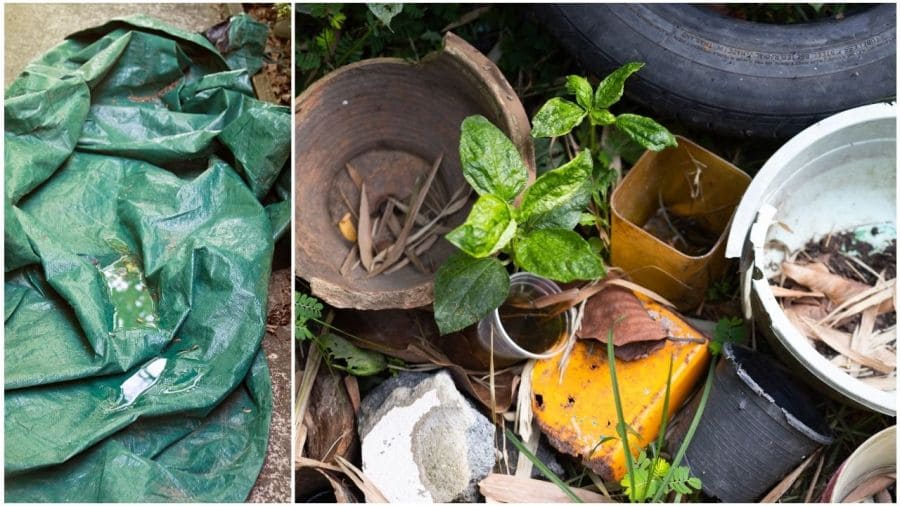
Image Credit: Canva Pro | Content License
8. Tall grasses and dense shrubs: Mosquitoes need shaded, cool, moist areas for hiding during the day time, as they avoid sunlight. The overgrown tall grasses and dense shrubs provides excellent conditions for mosquitoes to hide. The damp, moist and shaded hiding spaces in between thick vegetation give them plenty of hoding spots.
Keep your grasses and shrubs trimmed and well maintained. Shake of excess moisture around the grasses and shrubs and expose dark and densely covered areas to prevent mosquito breeding.
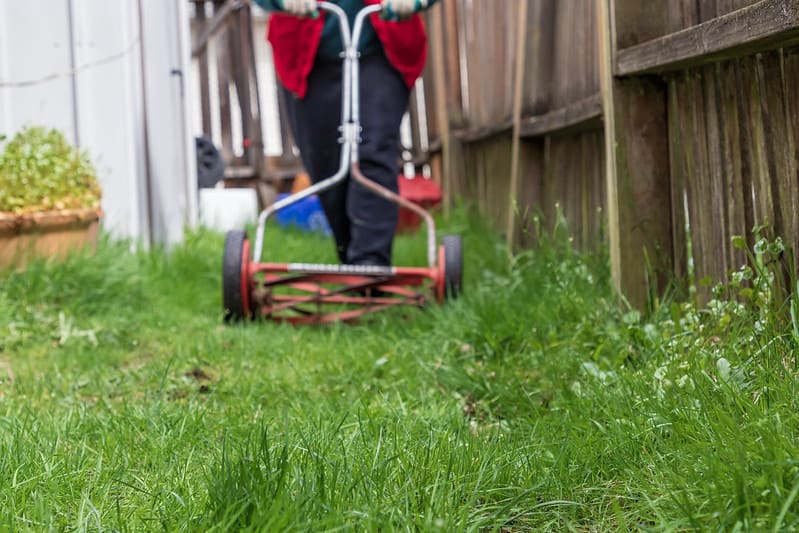
Image Credit: Flickr by Cindy Shebley | Content License
9. Overwatered lawns: Excess of water in your lawn will lead to formation of puddles and marshylands. This will create a damp and moist environment as needed by mosquitoes to hide and breed. Such standing water patches with wet grass are ideal grounds for mosquito breeding.
Water your lawn in moderation and under control. Avoid watering in evening when the evaporation is slow and drying will take much longer as compared to morning and afternoon where there is hot sun with broad daylight. Check for areas where water pooling may occur due to uneven floor levels in your lawn.
10. Water pooling in basement: Basements are more prone to dampness and humid climate due to poor ventialation. Any water leakage or seepage through ceilings and walls, will accentuate the issue of mosquito breeding in basement.
Prevent any leakage and seepage issue in your basement. Keep your basement dry free of leakages and make use of dehumidifiers.
11. Cluttered Garage: Unused containers, discarded tires, broken toys, discarded furniture, and similar such clutters usually find their way and end up in garages. These clutter and scrap collect dust and moisture and are rarely touched or moved, and if there is any pooling or accumulation of water through leakages, seepage or standing water in uncovered containers can become a perfect hiding and breeding spot for mosquitoes in garage.
Clean and organize your garage and remove all such unwanted, discarded scrap that are no longer in use. Check for any standing water in containers, repair leakages and seepages to keep the garage environment dry with no hiding spots.
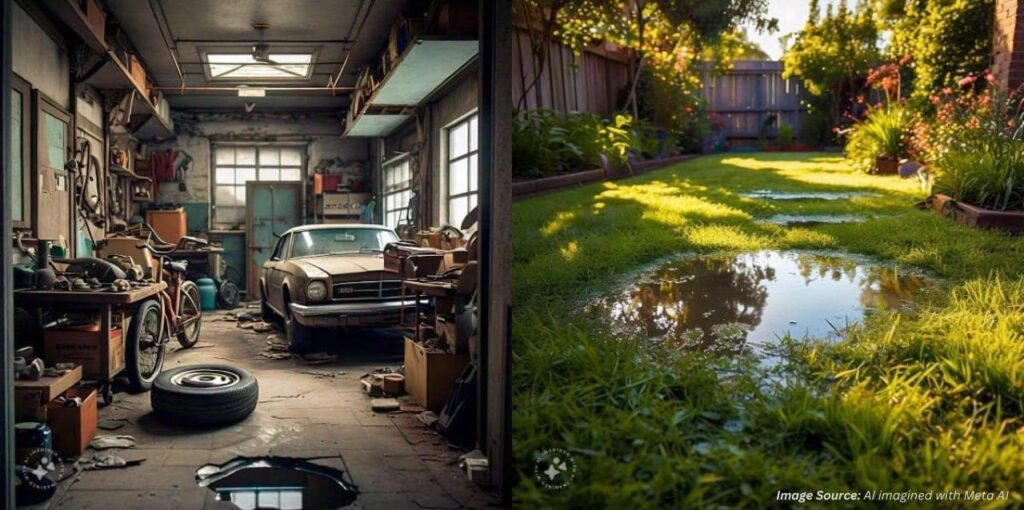
Image Credit: AI Imagined with Meta AI
12. Compost piles: Compost piles which are kept moist to undergo decomposition, are also responsible for attracting mosquitoes. It is full of decaying organic matter with moisture and thus creates a perfect breeding environment for mosquitoes.
Keep the moisture in compost piles at optimum levels, not too wet and keep it covered to restrict any mosquito which can lay eggs.
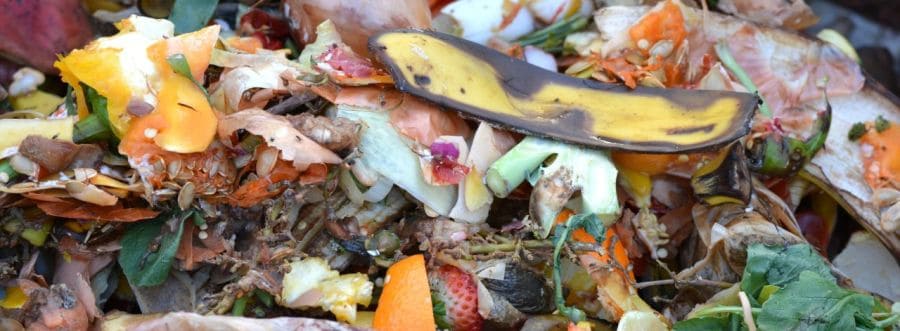
Image Credit: Canva Pro | Content License
13. Wet woodlogs: There are stock of wet woodlogs in your lawn or backyard, which you may use for fire pits or any outdoor decoration purpose. After rain, the water gets trapped in the gaps and crevices of these logs, creating dark, moist spaces for hiding and also patches of small standing waters which later becomes mini breeding sites.
To avoid such a situation keep yur wood logs dry and covered under a shade, and above the ground level to protect from rain. If possible, rotate the wood stock to avoid any moisture build-up.
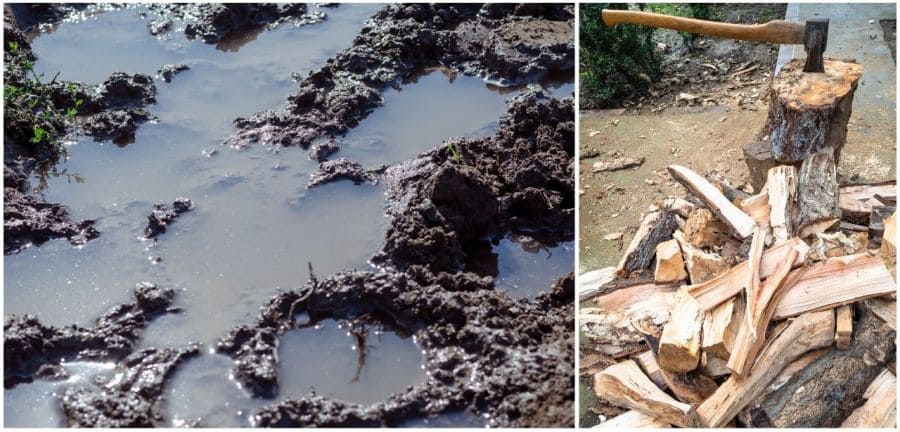
Image Credit: Canva Pro | Content License
5. Bright outdoor lights
Not all, but certain species of mosquitoes like Aedes and Anopheles are drawn to bright outdoor lights. Mosquitoes get confuse and in search of food they swarm around the bright lights at outdoor spaces. Consider using orange or yellow light which are less attractive to mosquitoes as well as other insects.
Place lights far from entry ways, away from doors and windows to prevent mosquito gathering.
6. Plants in your garden that attract mosquitoes
There are various mosquito attracting plants like water lilies, water hyacinth, water lettuce, bamboo, papyrus, taro, tall grasses and thick shrubs, etc. that provide perfect hiding spots and breeding grounds for mosquitoes.
These plants hold sufficient water and keep the surrounding environment moist and humid. As these plants have either large broad leaves or dense thick structure, that provides dark and shaded regions where mosquitoes can easily hide during day time.
7. Fruit-bearing trees and flower blooms
Male mosquitoes are in search of sugar as food source which they get from plant juices and nectar from flower blooms. They are also attracted to overripe or rotting fruits to feed on sugar, as a source of energy.
Collecting overripe fallen fruits and disposing off any rotting fruits and decaying matter that may attract mosquitoes later, will help you in keeping mosquitoes at bay. Planting mosquito repelling plants along with other plants can restrict mosquitoes coming to your garden.
8. Doors and windows without mosquito nets or screens
To restrict mosquitoes out of your home, you should install mosquito screens and nets and close all entry points. Any cracks and gaps in wall and around doors and windows should be sealed. Balconies and exhaust ventilating fans, should be covered with mosquito nets.
Door sweeps should be fixed to close the gap between the door and the floor. Even if the mosquitoes make their way inside your home, you should use mosquito nets for beds to protect your family and pets from mosquito bites.
Conclusion
Mosquitoes are attracted to a number of things around you and your home. You can identify these things that attract mosquitoes and prepare your own action plan. Start by eliminating sources of standing water as this will directly help you in reducing the number of mosquitoes and preventing their growth. You can kill mosquito larvae using different methods as this is the easiest option to control their population.
You need to manage your outdoor spaces thoroughly with regular checks and inspections, including any repairs and changes that might be needed. You can even change your diet and eat foods that repel mosquitoes.
You can easily manage and create a mosquito free environment in your surroundings by following a strategy of thoughtful measures and tips.

